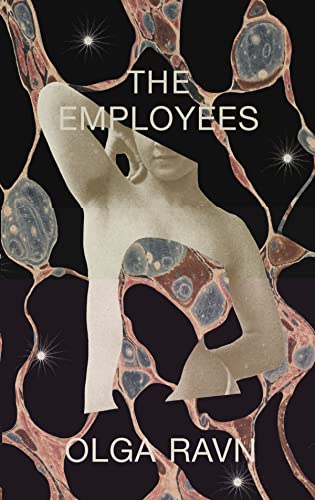The Employees by Olga Ravn, in a beautiful translation from the Danish by Martin Aitken, requires a suspension of expectations about science fiction but nevertheless delivers a devastating impact. As a collection of statements by the crew members of a spaceship, both human and humanoid, it has little narrative drive at first, though it does work toward an understated and powerful ending. A brief preface, written in familiar and insensate corporate language, tells us that the statements are responses to a set of undefined objects that the crew members take time to sit with in bare walled rooms. This seems to be some sort of experiment in performance review, but we soon find the responses to the objects revealing more and more about the anonymous human-born and “grown” humanoids, their interactions and ultimate fate.
That is all there is for a plot in The Employees, and it’s hard to identify with the anonymous speakers. Though vividly brought to life through their statements that reveal more and more extreme responses and dramatic changes, the characters are without names or histories enabling readers to identify with them. That is perversely appropriate since the corporation they serve, as the preface makes clear, only sees them as functionaries and tools of corporate processes, who seem to be gradually failing in fitness for purpose in their workflows. We can only guess if any of the crew are behind more than one statement and, if so, what that indicates about the changes they are experiencing. So we can’t feel like we’re getting to know individuals.
The ambience is that of a spaceship, called the Six Thousand on a distant planet called New Discovery, but there is little conventional world building. The ship is as sleek and empty as a modern office space, like the white hallways of the TV show Severance, and all we see of New Discovery is a long valley that the crew members sometimes visit. So, if we don’t have a complex plot of adventure, an interesting external world to explore, characters we can love or hate, what makes The Employees such an interesting and powerful experience packed into a hundred and thirty or so pages?
The statements the crew members make to anonymous corporate officials reveal an intense psychic and emotional pressure they all experience. At first it seems these are reactions to “the objects” but gradually we learn that the pressures have to do as much with the interaction of human and humanoid workers, the dulling nature of the work they do, the increasingly desperate search for a sense of humanness in terms people can feel, and their hope for a future that becomes less and less possible to imagine. Or perhaps that future is only imaginary, and the realization that there is no real future for anyone sets the crew members against each other.
There are outbreaks of violence, there is a generalized conflict between human and “grown” crew, and hovering over all is the life-or-death judgment of the corporate overlords who can choose to end the mission as well as the lives of all aboard the Six Thousand. The statements record the desire of many of the crew to meet corporate expectations, to perform their work efficiently, to enhance the workflows, or to operate, in the case of the humanoids, according to their programs. But reactions to the objects start to undermine the corporate-speak and force the crew into deep self-examination. They come to cherish the sensory imagery provoked by the objects and delve into remote memories either of Earth or of implanted memories of experience that never happened. An existential unease comes to permeate the inner lives of those who make these statements.
From the beginning, we learn that some want to identify with the objects and care for them tenderly by carefully cleaning them. Others feel hostility from these inert things, hear a humming coming from them. Another immerses in the smell these things emit that evokes sense memories of Earth, though it is clear these have been implanted in the humanoid who is making the statement. Another loves the column of light that can be let in through the ceiling of the rooms containing the objects and feels like its touch is a cleansing. Another warns against going into the second room, because “it’s not safe in there.” This employee starts to question their humanness after spending time there and asks “Does it say in your files if I’m human?” The disquiet and growing anguish of the crew comes through in another statement when the employee says they know that despite what the corporation says they are a prisoner because the objects tell them so.
Despite lacking the traditional forms of plot, character and world building, The Employees draws us into a tormented world of individuals trapped in a largely artificial environment, completely at the mercy of corporate officers, undergoing a sort of ultimate performance review that can have life-or-death consequences. I keep re-reading the brief statements in this short book over and over, always drawing more out of the brilliant brevity and compression of the language. Olga Ravn says she drew inspiration for this book from a real art exhibit which you can get a sense of online, but her dramatic imagination and literary gifts have created something more transcendent than the artworks that set her to writing this novel. Reading her work is a powerful if highly unconventional science fictional experience and not to be missed.



Leave a Reply